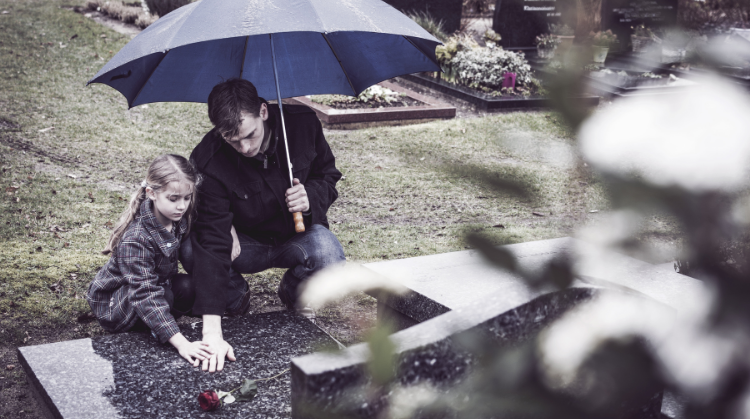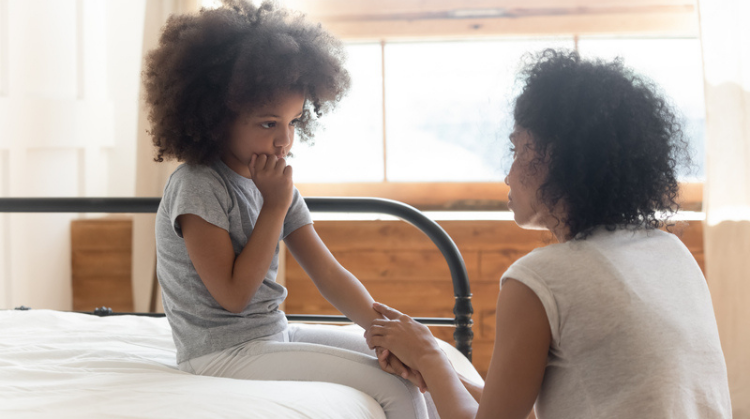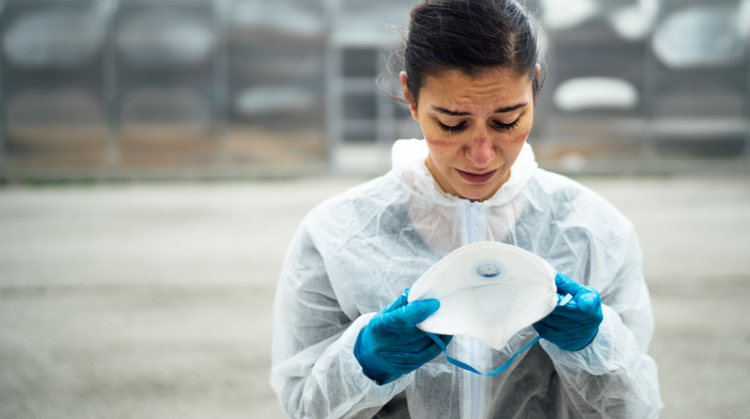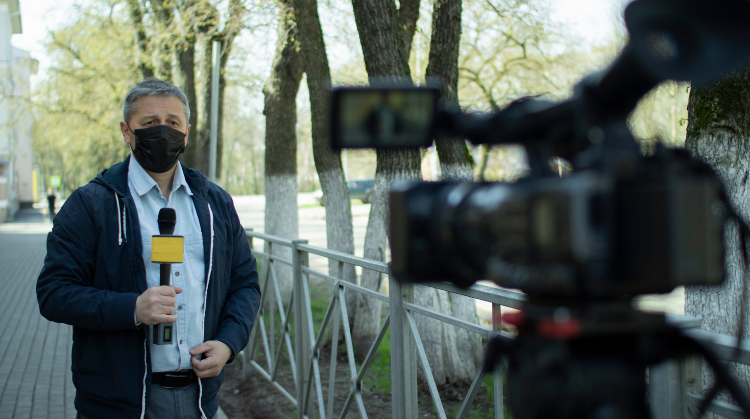You are here
- Home
- Grief Awareness Week 2020: The impact of COVID-19
Grief Awareness Week 2020: The impact of COVID-19

For Grief Awareness Week 2020, three academics from the School of Health, Wellbeing and Social Care (HWSC) within the Faculty of Wellbeing, Education and Language Studies (WELS), Dr Kerry Jones, Lecturer in End of Life Care, Dr Sharon Mallon, Senior Lecturer in Mental Health, and Dr Erica Borgstrom, Lecturer in End of Life Care, came together to explore experiences of children and young people’s death anxiety as a result of COVID-19, the impact of the pandemic and death on staff working in care establishments, and how grief was reported in UK newspapers.
The COVID-19 pandemic has brought unprecedented disruption to our daily lives, changing the way we educate, the way we work, and the way in which we care for the dying and ultimately say goodbye to our loved ones.
COVID-19 is not only a public health crisis but a psychological one, provoking death anxiety, stress, and sadness.
At present, we are collectively grieving the multiple losses many of us have experienced, these include lost jobs, lost connections with our wider community, and lost opportunities to spend time with family and friends. Many within society have also been affected by the loss of their loved ones and it is important to recognise that many individuals are currently grieving following bereavement this year.
COVID-19 has upended many of our understandings of the world around us, including our sense of predictability, what the future will hold, and the belief we can protect those we care for and about. Below, the authors discuss what this means for some members of society.
COVID-19: Children, young people and death anxiety
 Lockdowns and other quarantine measures, instigated in an attempt to stem the spread of the virus, have imposed unexpected social isolation on many of us, disrupting the daily routines of many in the global community. This unexpected disruption to social norms, structure, and daily activities has affected the mental health of the whole population including our children and young people.
Lockdowns and other quarantine measures, instigated in an attempt to stem the spread of the virus, have imposed unexpected social isolation on many of us, disrupting the daily routines of many in the global community. This unexpected disruption to social norms, structure, and daily activities has affected the mental health of the whole population including our children and young people.
Closures to schools, along with the cancellation of regular leisure activities, has particularly affected children and adolescents. This disruption has impacted the way children learn, grow, play, behave, interact, and manage their emotions. Quarantine measures can induce isolation, stigma, and fear among children, with the most common consequences being restlessness, inattention, anxiety, irritability, increased separation anxiety, and death anxiety.
During the current pandemic, children, young people, and their families have also been exposed to additional factors that can impact on stress and emotional wellbeing. The possibility that family members and friends could die are significant stressors affecting young people during COVID-19, especially if they belong to a ‘high risk’ group. Death anxiety occurs where children fear that a parent may contract the virus and ultimately die.
While COVID-19 has affected and continues to affect children and young people, the impact of this virus is also acutely felt among staff working in long-term care establishments such as residential and nursing homes.
The impact of the pandemic and death on long-term care professionals
 In the UK, while the challenges faced by health care workers working in core NHS services such as hospitals and GP practices have been much reported upon in the media, the role of staff working in long-term care establishments was initially ignored.
In the UK, while the challenges faced by health care workers working in core NHS services such as hospitals and GP practices have been much reported upon in the media, the role of staff working in long-term care establishments was initially ignored.
Those caring for older people within long term care establishments during COVID-19 have been presented with a unique set of circumstances; while death is an event that can be expected due to the older age and frailty of residents within a care home, the frequency with which death was happening during the COVID-19 pandemic was exceptional.
Caring is an extremely demanding occupation and many health and social care workers may not have had the time to acknowledge the emotional impact of a resident’s death. In some care homes, care workers have lived within the care setting to prevent the spread of infection, which means having to spend time away from their own families and support networks.
Aside from the obvious fear of infection spreading from patient to health care worker and onto their families (or the other way around), workforce shortage, lack of personal protective equipment (PPE), and in some cases the death of co-workers, has challenged the morale of staff working in long term care establishments.
How grief was reported in UK newspapers during the pandemic
 Along with colleagues at the University of Bristol, one of the projects the OU has been involved in is looking at how grief has been reported in UK newspapers during the COVID-19 pandemic.
Along with colleagues at the University of Bristol, one of the projects the OU has been involved in is looking at how grief has been reported in UK newspapers during the COVID-19 pandemic.
In particular, analysis of how grief was discussed early on in the pandemic (March-April 2020) has shown that the media focused on two main impacts of the pandemic on grief: changing socially-expected practices around death (e.g. visiting dying relatives and funeral practices) and the sense that deaths from COVID-19 were bad and represent a tragic loss of life.
This was particularly prevalent in early reporting which focused on the deaths of healthcare workers or individuals who were considered not to be in the ‘high risk’ groups, such as children. The media reports included sensationalist language and reflected the uncertainty at the time around guidelines.
Across the reporting, there was an indication that people could expect to face a sense of compounded loss due to how dying and grief were impacted by social and political measures put in place to reduce the spread of the virus. For example, social distancing could mean that someone was unable to be present at a dying person’s bedside. It also impacted funeral services and the ability to socially support bereaved people with visits after a death.
People reported not being able to grieve as they would normally expect to. The media discourse at the time then was indicated that COVID-19 disrupted socially held views about what it means to have a good death and to be able to grieve.
Read the full article by Dr Kerry Jones, Dr Sharon Mallon, and Dr Erica Borgstrom on OpenLearn: Grief and COVID-19: Mourning what we know, who we miss and the way we say goodbye.
Are you already an OU student?
Request your prospectus
Explore our qualifications and courses by requesting one of our prospectuses today.
Request prospectus